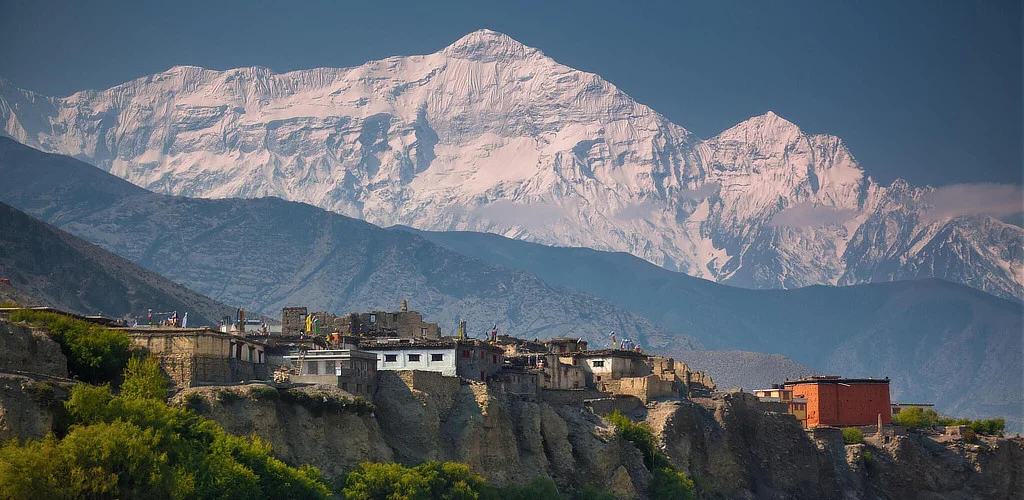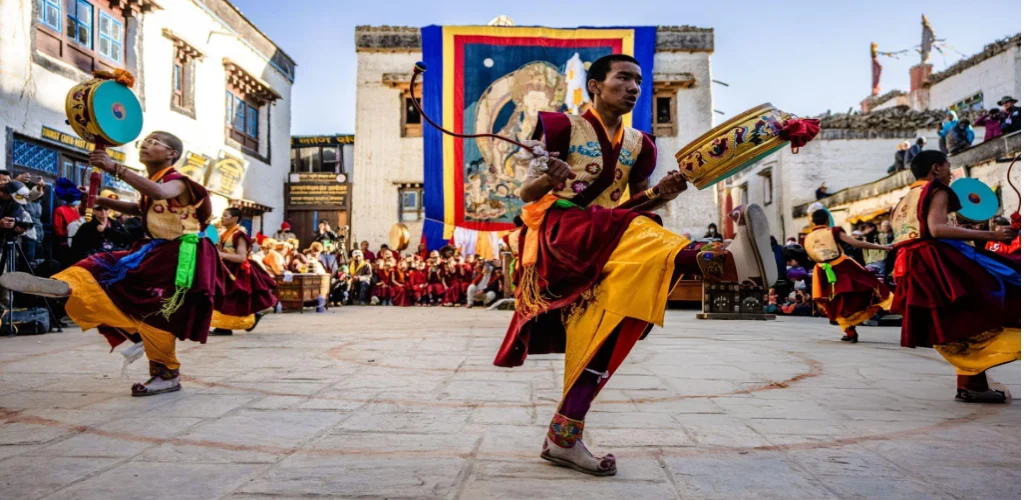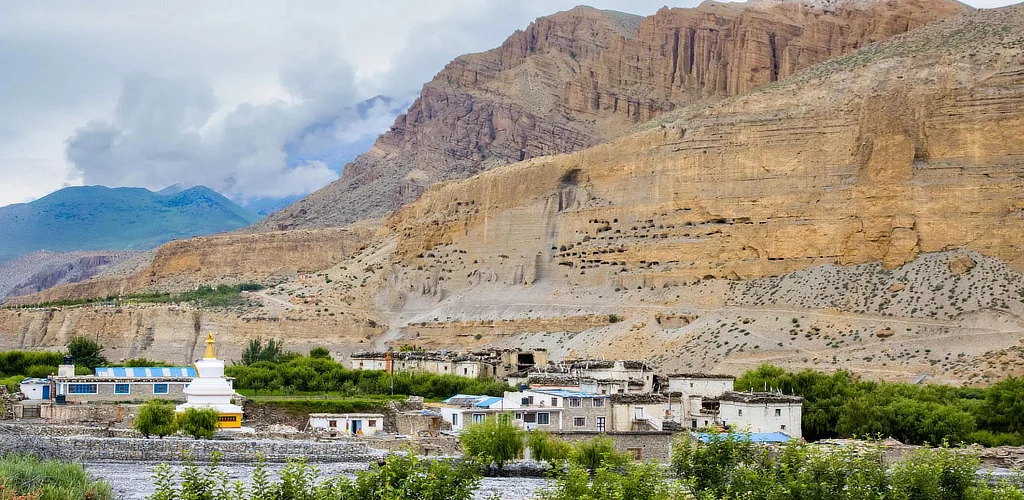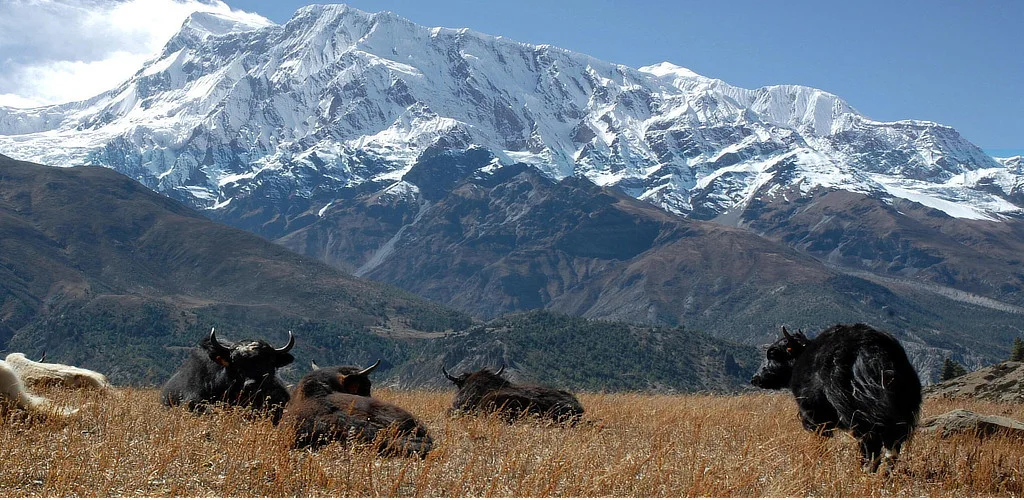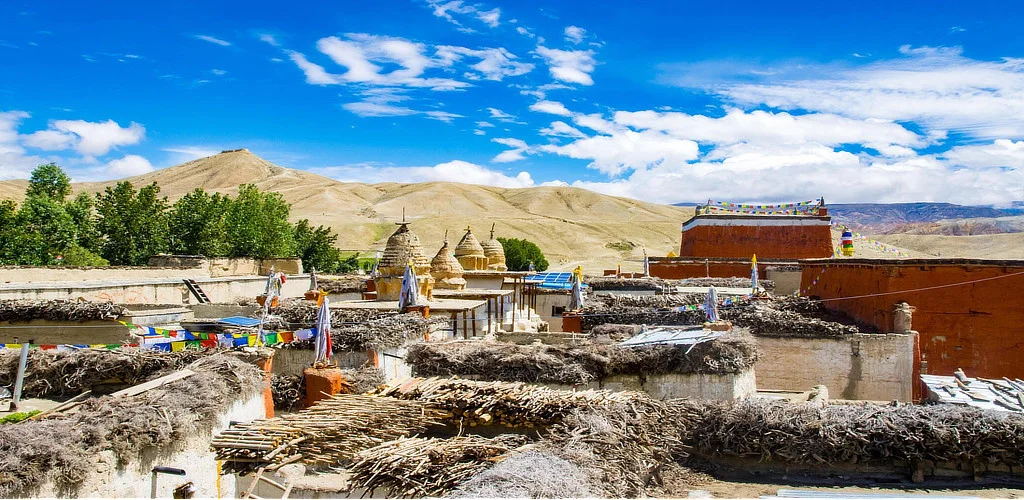Upper Mustang Trek is a popular destination for travellers, who would like to be very remote area and explores the antique Monastery, more than a thousand years of hundreds bankrupt cave and the Himalayan mountain desert with the local family area with Tibetan civilization the main magnetism of Mustang areas. The Upper Mustang Region is situated on the western Himalayan range and adjacent plateau of the Tibetan border of Nepal. Upper Mustang is a rain shadow area and still has a Mustangey Raja (state king of the Mustang) only one state king of Nepal, fossils on the river bank magnetism for the travels.
Upper Mustang Trek begins from Pokhara a gorgeous lake town in western Nepal and crosses the Annapurna conservation area will get to. Either fly to Jomsom or walk from the Beni and arrive at the entrance point of the Upper Mustang called Kagbeni. We start our Upper Mustang Trek through the Holy River bank of Kaligandaki and follow the upstream to get to Lo-Mangthang, which is the capital of the Upper Mustang. On Upper Mustang Trekking you may have a chance to discover the thousand years of old monasteries, caves, local tribes and beautiful different landscapes. You will have a great chance to complete the blessing from the King and the royal palace during the visit to the upper Mustang. The upper Mustang trek to Lo-Manthang is through an approximately tree-less barren landscape, a steep rocky trail up and down the hill and panoramic views of Nilgiri, Annapurna, Dhaulagiri and quite a few other peaks make your Upper Mustang Trek wonderfully.
The Home Ministry of Nepal announced the opening of the restricted Upper Mustang areas in October 1991. In Upper Mustang there is also strict management in obtaining a special permit from the Department of Immigration to protect their tradition from outside influence as well as to protect their environment. The high desert region of the Tibetan pressure, Kaligandaki, from the Tibetan border south to Kagbeni is usually referred to as “Upper Mustang” and has its own supposed king.
Itinerary
You will be picked up at the airport by one of the Real Journey Nepal staff and driven to your Kathmandu host family or a hotel. Here you will be welcomed into the family, be given your own room and be provided with all your meals while in Kathmandu. This will be your home during your orientation and volunteering in Nepal. With easy bus routes into town and the surrounding countryside, this quiet and safe suburb is the perfect base for your time in Nepal. Meals: Breakfast, Lunch and Dinner.
We tour Durbar Square, Pashupatinath temple, Swayambhunath stupa and Bouddhanath stupa which are all world heritage sites. The Durbar Square sheds light on the life of the royals in ancient times. Pashupatinath temple is one of the most important places of pilgrimage for all Hindus. Swayambhunath is also known as the Monkey Temple and Baudhanath Stupa is one of the largest stupas in the world. At noon, we are introduced to our fellow participants and discuss our trip at the Real Journey Nepal office. Overnight in Kathmandu. Meals: Breakfast, Lunch and Dinner.
At the beginning of the journey today we head to Pokhara. The journey to the city of lakes begins from the valley heading out of its twisty roads and reaching Prithvi Highway and the thrashing Trishuli River. The tranquil journey gives us a peek at the majestic Himalayas right as we enter the mesmerizing Pokhara valley. Overnight stay at a hotel in Pokhara. Meals: Breakfast, Lunch and Dinner.
Today we will take an early morning flight to Jomsom which is famous for its apples, strong winds and the landscape. We begin our trek on an open trail alongside a beautiful valley. We pass through Eaklibatti village before reaching Jomsom which is ideally located at the bank of two rivers. The village is beautiful with flat-roofed houses and also has ruins of an old fortress. Overnight in Kagbeni.
We get our permits checked then begin our trek on a trail alongside the Kali Gandaki River. We walk on sand amidst strong winds before ascending on a hill. We reach the Tangbe Village and admire its narrow alleyways, white-washed houses, barley and buckwheat fields, and apple orchards. We continue our walk and pass another village and cross a river on our way. Next, we walk on a ridge before reaching Chele Village. Overnight in Chele.
Our trek from today will be a little hard compared to what we experienced before. Our walk today involves crossing two passes, Taklam La pass (3,624m) and Dajori La pass (3,735). On our way, we enjoy great views of Tilicho, Yakawa Kang and Damodar Danda and pass by Ramchung Cave. We descend further and reach Samar Village. From here we walk on a trail above the village and reach a ridge. Next, we descend on a steep trail to a stream and continue our trek to Syanboche. Overnight in Syanboche.
We ascend to the Yamda La pass at 3,850m. On the way, we pass by a few teahouses, chortens and beautiful villages. We trek through poplar forests and barley fields and reach Nyi Pass at 4,010m. From here, we descend to Ghami which is one of the biggest villages in the Lo region. The village is beautiful with fields surrounding the entire village. Overnight in Ghami.
Our trek today begins with a descent through a rough and often slippery trail. We then cross a suspension bridge over the Ghami Khola and begin ascending. The pathway is beautiful with mani walls along the trail. Next, we cross the Tsarang La Pass at 3870m and reach Tsarang village. The village lies atop the Charang Chu canyon with a huge fortress and a red gompa towards its east. Overnight in Tsarang.
We begin our trek by descending to a canyon and cross a river before beginning our uphill trek to Lo La pass which at 3950m. From the top of the pass we can admire the beautiful Lo Manthang village. From the pass we descend to Lo Manthang which is a beautiful walled village. From here the views of the Himalayas including Nilgiri, Tilicho and Annapurna I, Bhrikuti Peak as well as Damodar Kunda (pond) is quite good. Overnight in Lo-Manthang.
Lo Manthang is a walled town of the remote Upper Mustang region of Nepal. We spend the day touring three major gompas of the town namely Jhampa, Thupchen and Chhoeda. All of these gompas have undergone expert restoration over the last two decades. We can also trek to Tingkhar which is a beautiful village located north-west of Lo-Mangthang. Overnight in Lo Manthang.
We trek on a different route when returning from Lo-Manthang. Our trail passes through Gyakar village which houses a century old Ghar Gompa with beautiful rock paintings. According to a local legend, anyone who makes a wish at the Gompa will have it fulfilled. We explore the Gompa and continue our trek to Drakmar for an overnight stay.
We start our trek early to avoid strong winds and descend for the most part of the trek. Our trail passes through a dry plateau and fields before reaching Ghiling. The walk can be relatively difficult as we are most likely to experience strong winds on our face. Ghiling is mostly dry, but we still get good views of Dhaulagiri and Nilgiri mountains. We can tour the village around the evening. Overnight in Ghiling
We begin our trek after breakfast. We walk on the same trail as before going up to Lo Manthang. On the way to Chhuksang we can enjoy great views of the Himalayas and small villages we pass en route. Overnight in Chhuksang.
Today is the last day of our trek and it is a long one. After trekking for a while, we come to an end of our Mustang trails and join the trails of the Annapurna circuit. We stop for lunch at Kagbeni. After lunch, we continue our trek to Jomsom for an overnight stay.
We take an early morning flight to Pokhara. The airplane passes through a gorge between Annapurna and Dhaulagiri mountains making the flight itself an amazing experience. After arriving in Pokhara, we can spend the rest of the day in leisure. Overnight in Pokhara.
After breakfast, transfer to the Tourist bus station and 07: 30 am drive back to Kathmandu by tourist bus. This scenic drive offers fascinating glimpses of rural Nepal as you pass through Middle Hill scenery along the famous rafting Trishuli River originated from Tibet northeast of Kathmandu. Meals: Breakfast, Lunch and Dinner.
Our journey in Nepal comes to an end today! A Real Journey Nepal representative will drop us off at the airport approximately 3 hours before our scheduled flight. On our way to home, we have plenty of time to plan our next adventure in the wonderful country of Nepal.
